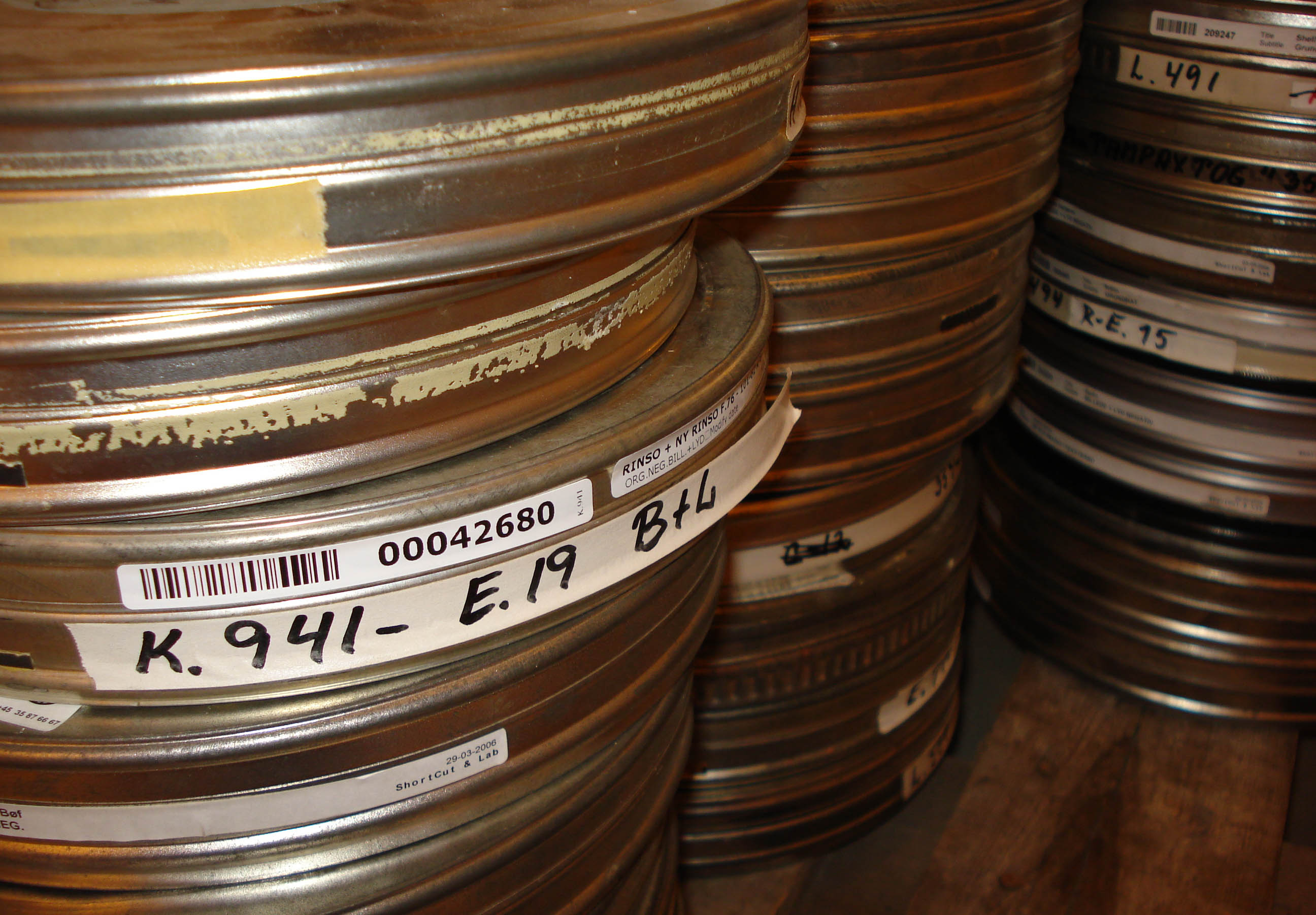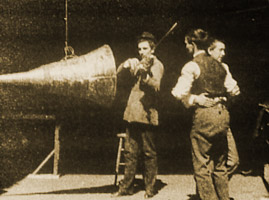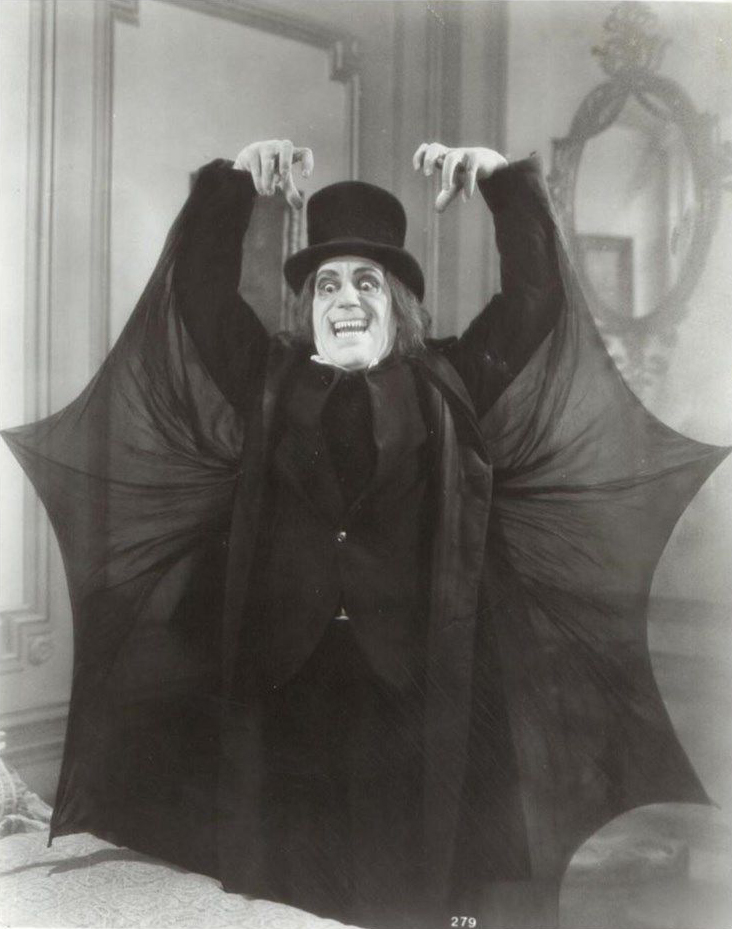|
Film Preservation
Film preservation, or film restoration, describes a series of ongoing efforts among film historians, archivists, museums, cinematheques, and non-profit organizations to rescue decaying film stock and preserve the images they contain. In the widest sense, preservation assures that a movie will continue to exist in as close to its original form as possible. For many years the term "preservation" was synonymous with "duplication" of film. The goal of a preservationist was to create a durable copy without any significant loss of quality. In more modern terms, film preservation includes the concepts of handling, duplication, storage, and access. The archivist seeks to protect the film and share its content with the public. Film preservation is not to be confused with film revisionism, in which long-completed films are modified with the insertion of outtakes or new musical scores, the addition of sound effects, black-and-white film being colorized, older soundtracks converted to Do ... [...More Info...] [...Related Items...] OR: [Wikipedia] [Google] [Baidu] |
Sound Film
A sound film is a Film, motion picture with synchronization, synchronized sound, or sound technologically coupled to image, as opposed to a silent film. The first known public exhibition of projected sound films took place in Paris in 1900, but decades passed before sound motion pictures became commercially practical. Reliable synchronization was difficult to achieve with the early sound-on-disc systems, and amplification and recording quality were also inadequate. Innovations in sound-on-film led to the first commercial screening of Short film, short motion pictures using the technology, which took place in 1923. Before sound-on-film technology became viable, soundtracks for films were commonly played live with organs or pianos. The primary steps in the commercialization of sound cinema were taken in the mid-to-late 1920s. At first, the sound films which included synchronized dialogue, known as "talking pictures", or "talkies", were exclusively shorts. The earliest feature fil ... [...More Info...] [...Related Items...] OR: [Wikipedia] [Google] [Baidu] |
EYE Film Institute Netherlands
Eye Filmmuseum is a film archive, museum, and cinema in Amsterdam that preserves and presents both Dutch and foreign films screened in the Netherlands. Location and history Eye Filmmuseum is located in the Overhoeks neighborhood of Amsterdam in the Netherlands. Its predecessor was the Dutch Historical Film Archive, founded in 1946 by David van Staveren, Felix Halverstad, and directors of Filmtheater Kriterion Piet Meerburg and Paul Kijzer. Following the accession of the archives of the Filmtheater de Uitkijk, the archive was renamed the Netherlands Filmmuseum under the leadership of its first director, film collector Jan de Vaal. The Filmmuseum was located in Kriterion and Stedelijk Museum until 1975, when de Vaal succeeded in acquiring a discrete space for the Filmmuseum in the Vondelpark Pavilion. In 2009, Nederlands Filmmuseum merged with Holland Film, the Netherlands Institute for Film Education and the Filmbank and plans were announced for a new home on the north bank ... [...More Info...] [...Related Items...] OR: [Wikipedia] [Google] [Baidu] |
Association Of Moving Image Archivists
The Association of Moving Image Archivists (AMIA) is a 501(c)(3) Nonprofit#USA, not-for-profit organization established to advance the field of Film preservation, moving image archiving by fostering cooperation among individuals and organizations concerned with the acquisition, description, preservation, exhibition and use of moving image materials. History Since the late 1960s, representatives from moving image archives have recognized the value of regular meetings to exchange practical information and experiences. Over the years, this group of archivists originally known as the Film and Television Archives Advisory Committee (F/TAAC) expanded from a handful of participants to several hundred archivists from over 100 national, regional and local institutions. In 1990, the name of the group was changed to the Association of Moving Image Archivists. In 1991, AMIA voted to formalize as an individual-based member-based professional association, the only one of its kind in the movin ... [...More Info...] [...Related Items...] OR: [Wikipedia] [Google] [Baidu] |
Film Base
A film base is a transparent substrate which acts as a support medium for the photosensitive emulsion that lies atop it. Despite the numerous layers and coatings associated with the emulsion layer, the base generally accounts for the vast majority of the thickness of any given film stock. Since the late 19th century, there have been three major types of film base in use: nitrate (until about 1951), acetate, and polyester. Nitrate In the literature of photography, "nitrate" is used as a synonym for the chemical nitrocellulose. It is also referred to as "cellulose nitrate". Nitrocellulose is guncotton, the first replacement propellant for gun powder in firearms. Film stock with a nitrate base was the first transparent flexible plasticized base commercially available, thanks to celluloid developments by John Carbutt, Hannibal Goodwin, and Eastman Kodak in the 1880s. Eastman was the first to manufacture the film stock for public sale, in 1889. Unfortunately, nitrate also had th ... [...More Info...] [...Related Items...] OR: [Wikipedia] [Google] [Baidu] |
Film Production
Filmmaking or film production is the process by which a Film, motion picture is produced. Filmmaking involves a number of complex and discrete stages, beginning with an initial story, idea, or commission. Production then continues through screenwriting, Casting (performing arts), casting, pre-production, Principal photography, shooting, Sound recording and reproduction, sound recording, post-production, and screening the finished product before an audience, which may result in a film release and exhibition. The process is nonlinear, in that the filmmaker typically shoots the script out of sequence, repeats shots as needed, and puts them together through editing later. Filmmaking occurs in a variety of economic, social, and political contexts around the world, and uses a variety of technologies and cinematic techniques to make theatrical films, episodic films for television and streaming platforms, music videos, and promotional and educational films. Although filmmaking originally ... [...More Info...] [...Related Items...] OR: [Wikipedia] [Google] [Baidu] |
Technicolor
Technicolor is a family of Color motion picture film, color motion picture processes. The first version, Process 1, was introduced in 1916, and improved versions followed over several decades. Definitive Technicolor movies using three black-and-white films running through a special camera (3-strip Technicolor or Process 4) started in the early 1930s and continued through to the mid-1950s, when the 3-strip camera was replaced by a standard camera loaded with single-strip "monopack" color negative film. Technicolor Laboratories were still able to produce Technicolor prints by creating three black-and-white matrices from the Eastmancolor negative (Process 5). Process 4 was the second major color process, after Britain's Kinemacolor (used between 1909 and 1915), and the most widely used color process in Cinema of the United States, Hollywood during the Golden Age of Hollywood. Technicolor's #Process 4: Development and introduction, three-color process became known and cele ... [...More Info...] [...Related Items...] OR: [Wikipedia] [Google] [Baidu] |
History Of Film
The history of film chronicles the development of a visual art, visual art form created using history of film technology, film technologies that began in the late 19th century. The advent of film as an artistic medium is not clearly defined. There were earlier cinematography, cinematographic screenings by others like the first showing of life sized pictures in motion 1894 in Berlin by Ottomar Anschütz; however, the commercial, public screening of ten Auguste and Louis Lumière, Lumière brothers' short films in Paris on 28 December 1895, can be regarded as the breakthrough of projected cinematographic motion pictures. The earliest films were in black and white, under a minute long, without recorded sound, and consisted of a single shot from a steady camera. The first decade saw film move from a novelty, to an established mass entertainment industry, with film production companies and studios established throughout the world. Conventions toward a general cinematic language develo ... [...More Info...] [...Related Items...] OR: [Wikipedia] [Google] [Baidu] |
Silent Film
A silent film is a film without synchronized recorded sound (or more generally, no audible dialogue). Though silent films convey narrative and emotion visually, various plot elements (such as a setting or era) or key lines of dialogue may, when necessary, be conveyed by the use of inter- title cards. The term "silent film" is something of a misnomer, as these films were almost always accompanied by live sounds. During the silent era, which existed from the mid-1890s to the late 1920s, a pianist, theater organist—or even, in larger cities, an orchestra—would play music to accompany the films. Pianists and organists would play either from sheet music, or improvisation. Sometimes a person would even narrate the inter-title cards for the audience. Though at the time the technology to synchronize sound with the film did not exist, music was seen as an essential part of the viewing experience. "Silent film" is typically used as a historical term to describe an era of cinema p ... [...More Info...] [...Related Items...] OR: [Wikipedia] [Google] [Baidu] |
Lost Films
A lost film is a feature or short film in which the original negative or copies are not known to exist in any studio archive, private collection, or public archive. Films can be wholly or partially lost for a number of reasons. Early films were not thought to have value beyond their theatrical run, so many were discarded afterward. Nitrate film used in early pictures was highly flammable and susceptible to degradation. The Library of Congress began acquiring copies of American films in 1909, but not all were kept. Due to improvements in film technology and recordkeeping, few films produced in the 1950s or beyond have been lost. Rarely, but occasionally, films classified as lost are found in an uncataloged or miscataloged archive or private collection, becoming "rediscovered films". Conditions During most of the 20th century, American copyright law required at least one copy of every American film to be deposited at the Library of Congress at the time of copyright registrat ... [...More Info...] [...Related Items...] OR: [Wikipedia] [Google] [Baidu] |
Silent Film
A silent film is a film without synchronized recorded sound (or more generally, no audible dialogue). Though silent films convey narrative and emotion visually, various plot elements (such as a setting or era) or key lines of dialogue may, when necessary, be conveyed by the use of inter- title cards. The term "silent film" is something of a misnomer, as these films were almost always accompanied by live sounds. During the silent era, which existed from the mid-1890s to the late 1920s, a pianist, theater organist—or even, in larger cities, an orchestra—would play music to accompany the films. Pianists and organists would play either from sheet music, or improvisation. Sometimes a person would even narrate the inter-title cards for the audience. Though at the time the technology to synchronize sound with the film did not exist, music was seen as an essential part of the viewing experience. "Silent film" is typically used as a historical term to describe an era of cinema p ... [...More Info...] [...Related Items...] OR: [Wikipedia] [Google] [Baidu] |
EYE Film Institute Netherlands - Nitrate Film Decay - 3
An eye is a sensory organ that allows an organism to perceive visual information. It detects light and converts it into electro-chemical impulses in neurons (neurones). It is part of an organism's visual system. In higher organisms, the eye is a complex optical system that collects light from the surrounding environment, regulates its intensity through a diaphragm, focuses it through an adjustable assembly of lenses to form an image, converts this image into a set of electrical signals, and transmits these signals to the brain through neural pathways that connect the eye via the optic nerve to the visual cortex and other areas of the brain. Eyes with resolving power have come in ten fundamentally different forms, classified into compound eyes and non-compound eyes. Compound eyes are made up of multiple small visual units, and are common on insects and crustaceans. Non-compound eyes have a single lens and focus light onto the retina to form a single image. This type of eye i ... [...More Info...] [...Related Items...] OR: [Wikipedia] [Google] [Baidu] |











